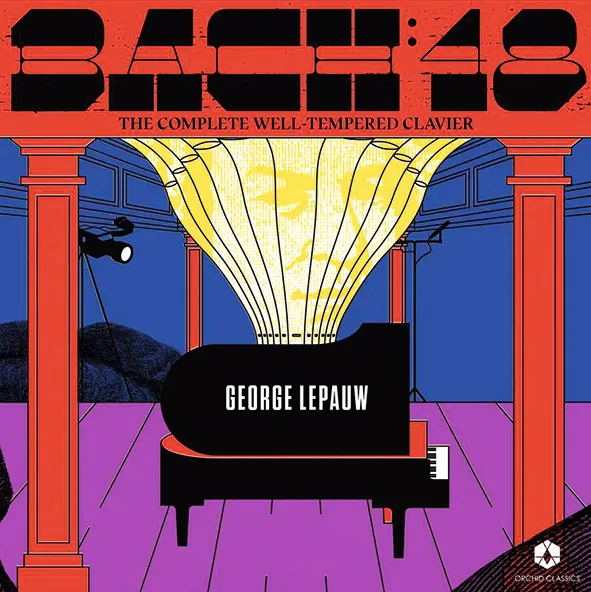
JS Bach Bach 48 – The Well-Tempered Clavier, Books I & II George Lepauw (piano) Orchid Classics ORC100107 310.33 mins (5 discs)
What Schumann memorably dubbed ‘the work of all works’ has long attracted harpsichordists and pianists in equal measure. Though Bach himself could have barely envisaged the Steinway piano of today – the chosen instrument for this recording – it seems unlikely, from all that we know of his active interest in the evolution of keyboard instruments, that he would have considered it unsuitable for the ‘48’.
George Lepauw provides the listener with a thoughtful if at times idiosyncratic survey of these preludes and fugues; and who of us can but applaud the sentiments expressed in his accompanying essay that the recording ‘was born out of my desire to become a more complete musician, and a better human being.’ Lepauw’s journey through these wonderful pieces is contemplative, commendably articulate and enhanced by unfailing linear clarity. His use of the sustaining pedal is judicious, and his carefully controlled rhythmic elasticity emphasises the romance of Bach’s music.
Inevitably, listeners will encounter their own highs and lows. The playful, virtuosic C sharp major Prelude (Book I) lacks the singing, at times almost puckish character of Edwin Fischer, while the E flat minor Fugue (Book I), affectingly used in Ingmar Bergman’s film Wild Strawberries, as well as providing inspiration for a proposed Bauhaus-style Bach monument in 1928, is sustained with acute sensibility. In Book II the D minor Prelude felt too brisk whereas, by contrast, the D major Prelude, almost a sonata movement, is full of interest, and whose chordal quavers in the second bar – and wherever the pattern occurs thereafter – are rhythmically gently swung. In summary, there is much to enjoy in this imaginatively-presented set.
Read more reviews of the latest JS Bach recordings here
Find out more about JS Bach and his works
Nicholas Anderson